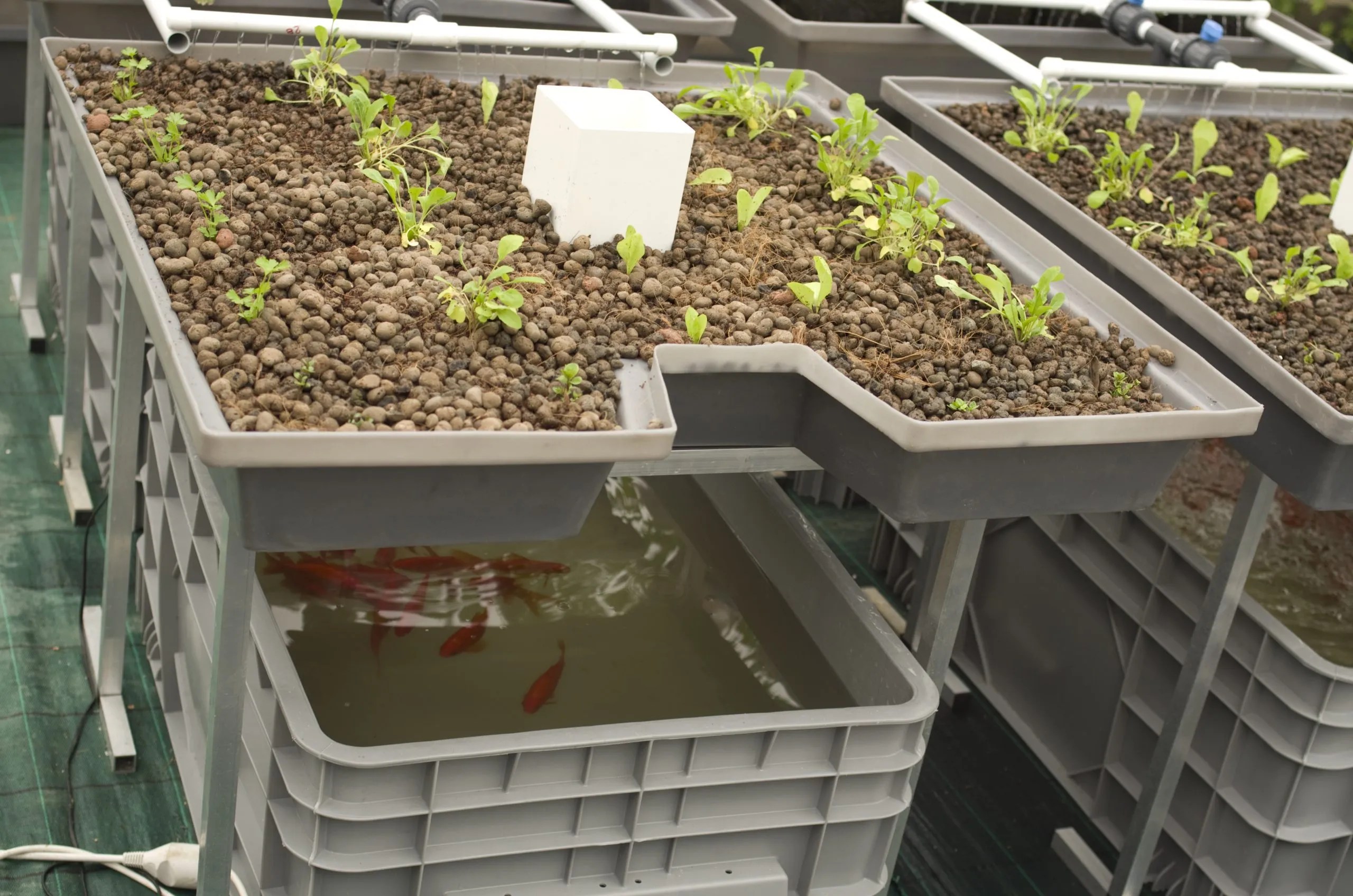 aquaponics.com
aquaponics.com Opening: Aquaponics for Everyone! Want to grow fresh food and raise fish simultaneously? Aquaponics, the combination of aquaculture (raising aquatic animals) and hydroponics (growing plants without soil), is a sustainable and rewarding method. This guide provides a step-by-step process for building a basic DIY aquaponics system that's perfect for beginners.
Step 1: Planning Your System Before diving in, consider the scale of your project and where you'll place it. Think about sunlight exposure, access to water and electricity, and the type of plants and fish you'd like to grow. A small system is ideal for learning the ropes. Here's what you'll generally need:
- A fish tank or container.
- A grow bed to hold the plants.
- A water pump.
- Piping to connect the tank and grow bed.
- Grow media (clay pebbles, gravel, etc.).
- Seeds or seedlings.
Step 2: Gathering Materials Once you have a plan, it's time to collect your supplies. A popular starting setup uses a 20-gallon fish tank and a similarly sized plastic tote for the grow bed. Don't forget the essential components:
- Fish tank (glass or plastic).
- Grow bed (plastic tote).
- Submersible water pump (check flow rate for your system size).
- PVC pipe and fittings (for plumbing).
- Grow media (clay pebbles are recommended).
- Air pump and air stone (for fish oxygenation).
- Fish food.
- Water testing kit (ammonia, nitrite, nitrate, pH).
Step 3: Building the Grow Bed The grow bed will house your plants.
- Drill drainage holes in the bottom of the grow bed. Ensure they're small enough to prevent media from escaping but large enough to allow water to drain freely.
- Place the grow bed above the fish tank. You can use cinder blocks, a table, or build a simple wooden frame. Gravity will assist with water return.
- Consider adding a siphon system (bell siphon or auto-siphon) to your grow bed. This will create a flood and drain cycle, which is beneficial for plant root oxygenation. There are numerous tutorials online demonstrating how to build simple siphons. If not using a siphon ensure the water can drain sufficiently with the drainage holes.
Step 4: Plumbing the System Connect the fish tank and grow bed with piping.
- Place the submersible water pump in the fish tank.
- Attach a section of PVC pipe to the pump outlet.
- Run the pipe up to the grow bed.
- Position the outlet pipe so the water disperses evenly across the grow bed.
- Create a return pipe from the grow bed back to the fish tank. If you have a siphon, this is where the siphon will drain. If you do not have a siphon ensure this pipe flows easily with a good gradient to reduce blockages.
Step 5: Preparing the Fish Tank Get the fish tank ready for your aquatic friends.
- Thoroughly clean the fish tank. Do not use soap or detergents.
- Place the air pump and air stone in the tank to provide oxygen.
- Fill the tank with dechlorinated water. Tap water contains chlorine and chloramine, which are harmful to fish. You can use a dechlorinating solution or let the water sit for 24-48 hours to allow the chlorine to evaporate.
- Cycle the tank. This establishes beneficial bacteria that convert fish waste into plant nutrients. This is crucial and may take 4-6 weeks. Add a small amount of ammonia (fish food will decompose into ammonia) and monitor ammonia, nitrite, and nitrate levels using a water testing kit. When ammonia and nitrite levels drop to zero and nitrate levels rise, the tank is cycled.
Step 6: Setting Up the Grow Bed Prepare the grow bed for planting.
- Rinse the grow media thoroughly to remove dust and debris.
- Fill the grow bed with the rinsed grow media.
Step 7: Introducing Fish and Plants Once the system is cycled, you can add fish and plants.
- Introduce the fish gradually to avoid shocking them. Float the bag they came in inside the tank for about 30 minutes to equalize the temperature. Then, slowly add tank water to the bag over another 30 minutes before releasing them. Start with a small number of fish to avoid overloading the system. Good beginner fish include goldfish, tilapia (check local regulations), or koi.
- Plant seeds or seedlings in the grow bed. Ensure the roots are in contact with the grow media. Good starter plants include lettuce, herbs (basil, mint), and leafy greens (spinach, kale).
Step 8: Monitoring and Maintenance Regular monitoring and maintenance are essential for a healthy aquaponics system.
- Test the water regularly (at least once a week) for ammonia, nitrite, nitrate, and pH. Adjust as needed to maintain optimal levels for both fish and plants.
- Feed the fish regularly with appropriate fish food. Follow the feeding instructions on the food packaging.
- Remove any dead plant matter from the grow bed.
- Clean the fish tank and grow bed periodically to remove debris.
- Top up the water level as needed due to evaporation.
Conclusion: Enjoying Your Aquaponics System Congratulations, you've built your own DIY aquaponics system! With a little care and attention, you can enjoy fresh, homegrown produce and healthy fish. This is a fantastic learning experience and a step toward sustainable food production. As you gain experience, you can expand your system and experiment with different plants and fish. Happy growing!
Commercial Aquaponics Online Course
 aquaponics.com
aquaponics.com Commercial Aquaponics • Nelson & Pade Aquaponics
 aquaponics.com
aquaponics.com Commercial Aquaponics • Nelson & Pade Aquaponics
 aquaponics.com
aquaponics.com  urbancowgirllife.com ```html
urbancowgirllife.com ```html  slowcookingperfected.com
slowcookingperfected.com  1krecipes.com
1krecipes.com  ar.inspiredpencil.com
ar.inspiredpencil.com  www.diys.com
www.diys.com  www.prudentpennypincher.com
www.prudentpennypincher.com  www.greenlife.co.ke ```html
www.greenlife.co.ke ```html  www.plantsonwalls.com
www.plantsonwalls.com  agrierp.com
agrierp.com  www.delineateyourdwelling.com
www.delineateyourdwelling.com  handycolor.vercel.app
handycolor.vercel.app /GettyImages-142873284-7afec7706c2a4997841bde2792c7ff6b.jpg) www.treehugger.com ```html
www.treehugger.com ```html  www.aquaponicsforbeginners.com
www.aquaponicsforbeginners.com  agromoris.com
agromoris.com  aquasprouts.com
aquasprouts.com  www.theaquaponicsource.com
www.theaquaponicsource.com